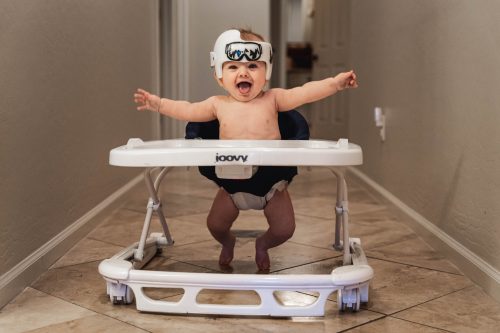Baby Walkers: Not Worth the Safety Risk
Posted in In the news, Product Liability on January 18, 2021
Did you know that the sale of baby walkers is banned in Canada? If the American Academy of Pediatrics (AAP) gets its way, the same will be true in the United States. Why would the AAP want to ban something as seemingly run-of-the-mill as a baby walker? The answer is simple—baby walkers are dangerous.
Baby Walkers and Accidents

Don’t be fooled by the cute baby—infant walkers are dangerous.
Researchers analyzed National Electronic Injury Surveillance System data from 1990 to 2014. Among the study’s findings:
- An estimated 230,676 children younger than age 15 months were treated in U.S. emergency departments for walker-related injuries from 1990 to 2014.
- 90 percent of baby walker accidents involved injuries to the head and/or neck.
- 74.1 percent of walker-related incidents involved a child falling down the stairs while in a walker.
- About 4 percent of the injured children were admitted to the hospital.
- 37.8 of those children had a skull fracture, while 30 percent had a concussion or closed-head injury.
- Infant walker-related injuries can be severe.
- They can include skull fractures, brain injury, injuries to the face and neck, fractures to the arms and legs, burns, poisoning and drowning.
Alternatives to Baby Walkers
Instead of a walker, try one of these safer options:
- Stationary walkers
- These devices rotate, tip and bounce, but have no wheels. Thus, the child remains in one spot.
- Playpens
- They provide a safe spot for a child to learn to sit, crawl or walk
- High chairs
- They act as a fun place for babies to play with toys.
Contact Elk & Elk for a free case review
If your child was injured in a baby walker, you may have grounds to pursue a product liability claim. Call 1-800-ELK-OHIO to schedule a free consultation with our Ohio product defect attorneys. You can also contact us online to learn more about your legal rights and options.